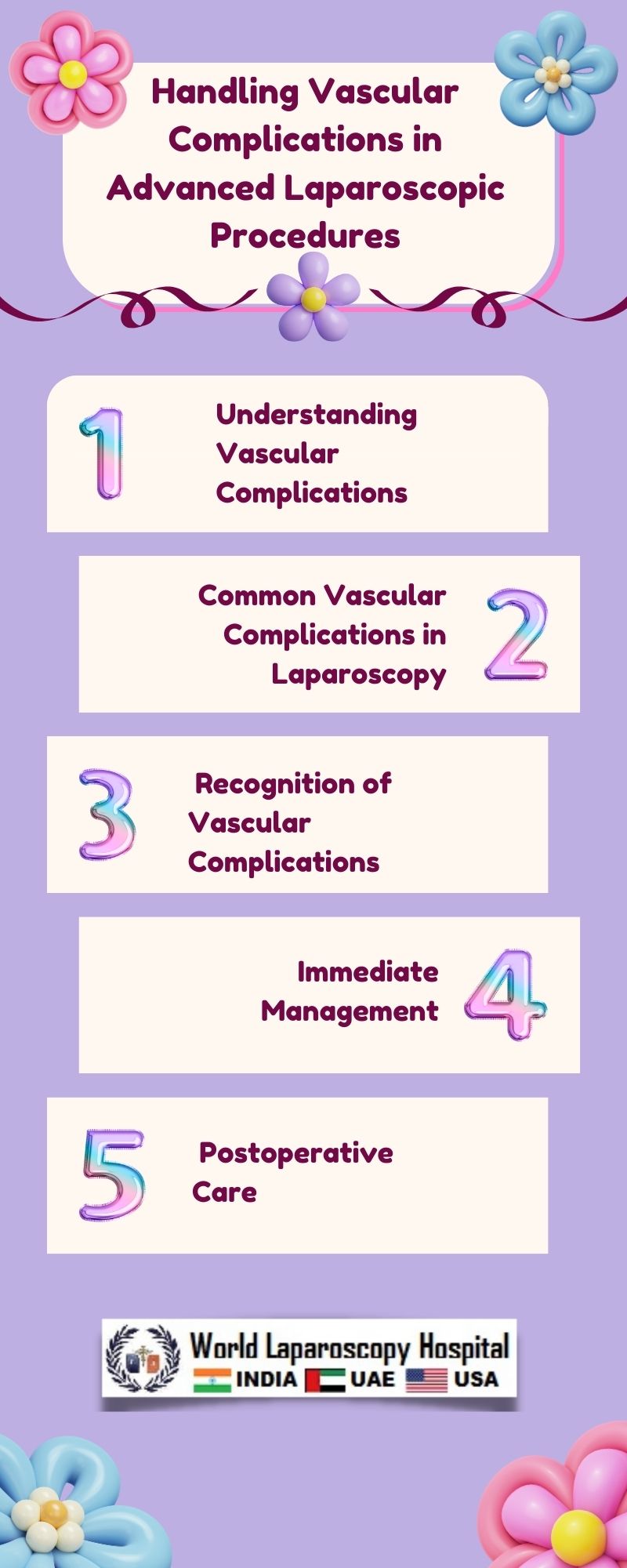Handling Vascular Complications in Advanced Laparoscopic Procedures
Introduction
The field of laparoscopic surgery has witnessed remarkable advancements over the years, offering patients minimally invasive alternatives to traditional open surgeries. As surgeons delve into more complex procedures, the risk of encountering vascular complications during advanced laparoscopic surgeries becomes a critical concern. This article aims to explore the challenges associated with vascular complications in advanced laparoscopic procedures and provide a comprehensive guide for surgeons to handle these situations effectively.

The Surge of Advanced Laparoscopic Procedures
The advent of advanced laparoscopic procedures has revolutionized the landscape of surgery, offering patients reduced recovery times, smaller incisions, and decreased postoperative pain. Surgeons now routinely perform intricate surgeries such as laparoscopic colorectal resections, hepatectomies, and bariatric surgeries using minimally invasive techniques.
Despite these advancements, the increased complexity of procedures brings forth new challenges, and vascular complications have emerged as a notable concern. Accidental injuries to major blood vessels can occur during trocar placement, dissection, or when manipulating surrounding structures. This necessitates a thorough understanding of vascular anatomy, meticulous surgical techniques, and preparedness to manage unforeseen complications.
Understanding Vascular Anatomy in Laparoscopic Surgery
A solid grasp of vascular anatomy is paramount for surgeons engaged in advanced laparoscopic procedures. Misinterpretation of anatomical structures or inadvertent injuries to blood vessels can lead to severe complications. Surgeons must be well-versed in the three-dimensional anatomy of blood vessels to navigate through laparoscopic dissections safely.
Key Vascular Structures in Abdominal Laparoscopy
Major Arteries: a. Abdominal Aorta b. Inferior Vena Cava c. Celiac Artery d. Superior Mesenteric Artery e. Inferior Mesenteric Artery
-
Major Veins: a. Hepatic Veins b. Portal Vein c. Renal Veins d. Inferior Vena Cava
Identification Techniques and Technologies
-
Doppler Ultrasound: Utilizing Doppler ultrasound during laparoscopy allows real-time identification of vascular structures, aiding surgeons in avoiding inadvertent injuries.
-
Indocyanine Green (ICG) Fluorescence Imaging: ICG can be injected intravenously to enhance visualization of blood vessels, providing valuable information about perfusion and aiding in the prevention of vascular injuries.
Common Vascular Complications in Laparoscopic Surgery
Trocar-Related Injuries
-
Vessel Penetration: Accidental penetration of blood vessels during trocar placement can lead to bleeding and requires prompt intervention.
-
Hematoma Formation: Hematomas may form around trocar sites due to vessel injury, potentially causing compression and compromising blood flow.
Intraoperative Vascular Injuries
-
Thermal Injury: The use of energy devices during dissection poses the risk of thermal injuries to adjacent blood vessels, leading to coagulation and potential vascular compromise.
-
Vessel Lacerations: Sharp dissection near major vessels can result in lacerations, leading to bleeding and increased difficulty in achieving hemostasis.
Strategies for Prevention and Early Detection
Preoperative Planning
-
Comprehensive Imaging: Preoperative imaging, such as CT angiography, helps in understanding the patient's vascular anatomy and identifying potential variations.
-
Trocar Placement: Precise trocar placement under direct visualization and utilizing access techniques that minimize the risk of vascular injury.
Intraoperative Measures
-
Gentle Tissue Handling: Delicate tissue manipulation reduces the risk of unintended vessel trauma during the procedure.
-
Real-time Imaging Modalities: Utilization of intraoperative imaging techniques like ultrasound or ICG to identify and assess vascular structures.
-
Controlled Use of Energy Devices: Implementing precise and controlled use of energy devices to minimize the risk of thermal injuries to adjacent vessels.
Managing Vascular Complications: A Step-by-Step Approach
Immediate Recognition
-
Vigilant Monitoring: Continuous monitoring of vital signs and hemodynamic parameters to promptly identify any signs of vascular compromise.
-
Visual Inspection: Regular visual inspection of the operative field for any signs of bleeding or hematoma formation.
Hemostasis
-
Direct Pressure: Application of direct pressure on bleeding vessels using laparoscopic instruments or other hemostatic devices.
-
Hemostatic Agents: Utilization of hemostatic agents to aid in achieving hemostasis.
Conversion to Open Surgery
-
Timely Decision-Making: Swift decision-making regarding the need to convert to open surgery if laparoscopic measures prove insufficient.
-
Open Exploration: Exploration of the operative field through an open approach allows for better visualization and control of vascular injuries.
Case Studies and Lessons Learned
Trocar-Related Injury
- Presentation: Accidental vessel penetration during trocar placement.
- Management: Immediate recognition, trocar repositioning, and application of direct pressure for hemostasis.
Thermal Injury
- Presentation: Thermal injury to the inferior mesenteric artery during energy device use.
- Management: Immediate cessation of energy, application of hemostatic agents, and consideration of conversion to open surgery.
Postoperative Care and Follow-Up
Hemodynamic Monitoring
- Postoperative Vigilance: Continuous monitoring of vital signs in the postoperative period to detect any delayed vascular complications.
Imaging Studies
- Postoperative Imaging: Follow-up imaging studies to assess the integrity of repaired vessels and identify any late complications.
Conclusion
In conclusion, managing vascular complications in advanced laparoscopic procedures requires a multifaceted approach involving meticulous preoperative planning, a profound understanding of vascular anatomy, and the ability to adapt to unforeseen circumstances intraoperatively. Surgeons must be equipped with the knowledge and skills to prevent, recognize, and effectively manage vascular complications, ensuring optimal outcomes for patients undergoing these complex procedures. Continuous education, hands-on training, and a commitment to patient safety are paramount in navigating the intricate vascular maze of advanced laparoscopic surgery.
| Older Post | Home | Newer Post |

